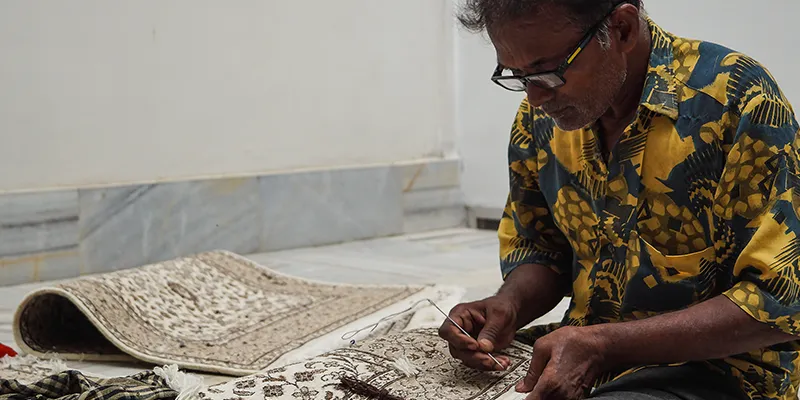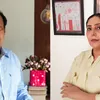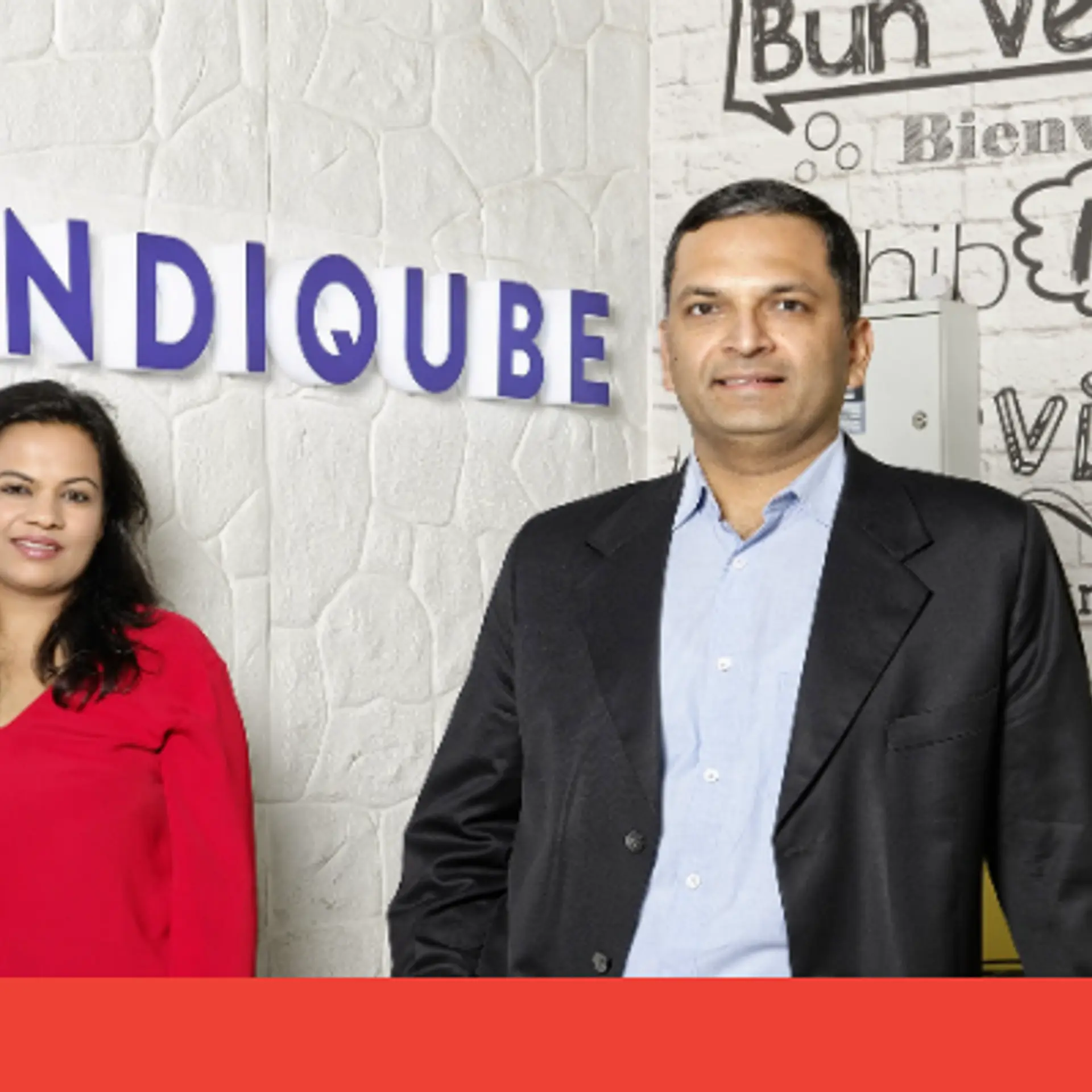From selling door-to-door to making carpets for the Crown Prince of Abu Dhabi: the story of Insigne Carpets
Insigne Carpets was founded by Asif Rahman in 2011. The luxury carpet manufacturing company designs carpets for five-star hotels, private jets and luxury properties, and has so far executed around 4,500 projects across the world.
Asif Rahman’s journey in the carpet industry started in 1988. After graduating from Calcutta University, Asif ran from pillar to post looking for job opportunities. One day, he stopped at a rug store outside Kolkata’s Park Street and started checking out the carpets through the glass window. Intrigued, the owner called him inside and after a brief conversation, he offered him a job to head his carpet installation team. Asif started working with the team to install carpets at five-star hotels.
He was promoted to the post of a sales executive in the place. Even though many refused to entertain him because he was a salesperson, Asif ensured he achieved all his targets and climbed the corporate ladder. Later, he even relocated to places like Bhadohi and Mirzapur in Uttar Pradesh, which are well-known hubs for carpet manufacturing and selling.
These experiences helped him closely understand how the carpet industry worked. He gained in-depth knowledge about carpets — from colours, budgets, how to procure raw materials and maintain backend stock, market needs, and much more.
Asif also worked as Director of Operations (South East Asia) with Tai Ping, a Hong Kong-based carpet manufacturing company. Soon, he realised he wanted to dive into entrepreneurship. He launched in 2011 with a primary investment of Rs 35 lakh amassed from personal savings.
The Gurugram-based luxury brand is an end-to-end solutions provider that offers consultation, manufacturing, installation of carpets and other facilities.

A carpet designed by Insigne Carpets
Starting up
After working with established companies, building one’s own company from scratch was not easy for Asif. For example, the company didn’t receive a single order for the first few months. In addition, Asif had to go the extra mile to create awareness about the newly-formed business. Also, since the company didn’t have an office in the early days, he and his small team worked from home.
However, Asif said that his reputation and contacts in the industry helped him overcome all these stumbling blocks.
The efforts paid off as today, the company operates across a host of sectors including entertainment, hospitality, commercial, residential etc, and has an impressive line up of clientele. Insigne Carpets has designed and created carpets for luxury projects like La Samaritaine (Paris), The Pierre (New York), Wynn Casino (Las Vegas), Salalah International Airport (Oman), among many others.
The company’s USP, Asif tells SMBStory, lies in customisation. He claims that they make only one piece of a particular design and don’t recreate the same piece again.
How are carpets made?
Insigne Carpets started with one manufacturing facility in Newada village, Varanasi, and set up another in Agra. In 2018, when Tai Ping was acquired by another company in Thailand, its carpet manufacturing unit in China was left stranded. Asif took over the mill and made it a part of his company.
“This allowed me to manufacture world-class carpets under an Indian brand name,” he quips.
The company today has four manufacturing units — including two in China’s Guangzhou and Hangzhou cities.
To make a basic carpet, Insigne Carpets first buys raw fibre from local sources and then processes it into yarn in the units itself. The next step is to decide the size, design, colour, and other details with the client. Once, everything is in place, the actual process of manufacturing the carpets begins.
There are several ways to manufacture carpets, but Indian manufacturers predominantly use hand-tufted and hand-knotted methods. The former is a modern method whereas the latter has been in use since ancient times.
Carpets are first designed on graph paper. Using it, the maker then outlines the design of the carpet on the cloth. The yarns are then dyed, and the carpet is then tufted using a tufting gun. If processed using the hand-knotted method, then it is weaved on specialised handlooms as per knotting requirements.
It takes six to seven weeks for the carpet to get ready using the hand-tufted method, and 14-16 weeks using the hand-knotted method.
Insigne Carpets’ manufacturing unit in China has the capacity to produce 5,000 sq metres of carpet, whereas the Indian unit can manufacture 1,000 sq metres.

A worker at Insigne Carpets weaving a carpet
Challenges in the Indian carpet industry
India is well-known for its excellent craftsmanship, and for creating intricate carpet designs. The industry also brings significant foreign exchange to the country. According to a report by IBEF, Indian exports of carpets stood at $1.37 billion in FY20. India is home to some well-known carpet companies like YAK and OBEETEE.
Despite the massive opportunity and scope the sector holds, it is still facing stagnation and negative growth. Asif says that demonetisation, goods and services tax (GST), and COVID-19 have crippled the sector.
Asif calls the carpet industry a “neglected sector.” Further, the lack of innovation and proper infrastructure has reduced the growth avenues.
He also says that there are now plenty of options due to the proliferation of online marketplaces. “People prefer going to sites like IKEA which sell carpets at a much cheaper price. Additionally, there is also refund and exchange policies and the carpets are delivered to you at your doorstep,” Asif adds.
Asif cites another shortcoming in the sector. He says that while exporting carpets to places like the US or Europe, a BFL-S1 certification is required. “India does not have a single lab that provides the certification. We have to send our carpets to Barcelona, Spain, and spend extra euros to get the certification.”
He also says that apart from the Indian Institute of Carpet Technology (IICT), there are no major institutions which can educate the next generation about this industry. Moreover, the migration of workers to urban cities in search of better opportunities has further pushed the sector to the margins.
Asif also says that the government needs to formulate policies to bolster domestic demand.
“A country like Bangladesh is known for jute carpets. But it has a policy whereby no one can import a jute carpet. Similarly, a country like China first consumes what is produced and then opens the gates for exports,” he explains.
Current challenges and future plans
While Insigne Carpets refuses to divulge turnover numbers or how much they charge from clients, Asif reveals that the company undertakes around 500 projects a year. They have so far completed around 4,500 projects all over the world. The company has presence across Europe, UAE, the US, and other parts of the world, with a representative in each country.
The COVID-19 pandemic has sent shockwaves across the country. Since the company has operations in China as well as India, Asif felt the impact of the pandemic first-hand. “In China, we did not produce anything for two months but in India, our factory was closed for almost six months from March to August,” he says. A non-cancellation of orders policy saved the company, otherwise, Asif says, it “would have been miserable.”
Moving forward, he plans to increase the visibility of the company. It is also finishing some large-scale luxury projects like the carpeting of the private boat of the Crown Prince of Abu Dhabi. The company recently finished an order of supplying carpets to office in New York.
Asif also plans to make carpets using more sustainable and environment-friendly options. “We are working on making fibres from natural materials like corn while using, hemp, jute etc,” he adds.
Edited by Kanishk Singh









